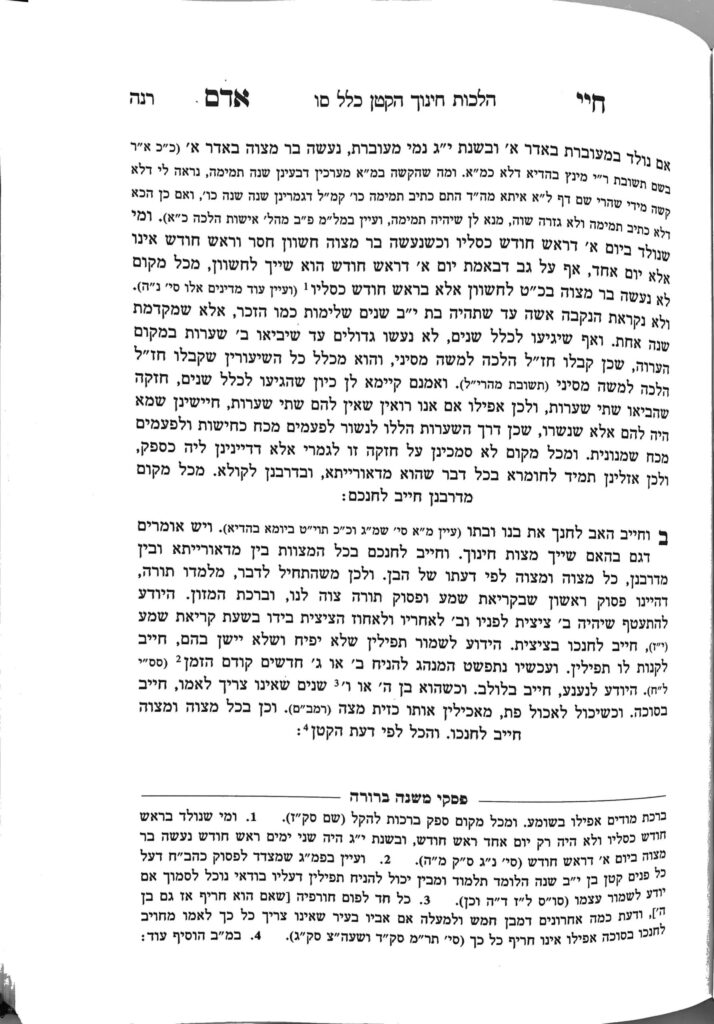We have finished siman 2, in which the Chayei Adam listed some examples of the proper age to begin chinuch in specific mitzvos. We have discussed the examples of lulav and talmud torah, and will begin discussing birchas hamazon.
The Chayei Adam mentioned birchas hamazon as an example of something taught to a child from the age at which they can speak, along with the pasuk of torah tzivah lanu Moshe and the first pasuk of shema. At the time, we pointed out that it is hard to understand why the Chayei Adam grouped birchas hamazon with limud hatorah. Either way, there is certainly a chiyuv chinuch regarding brachos, both for birchas hamazon, which is deoraysa, and other brachos, which are derabanan.
The Shulchan Aruch writes that when one is teaching their child birchas hamazon, they should teach the child a little bit of birchas hamazon at a time as per their capabilities. The Mishnah Berurah explains that the Shulchan Aruch means to say that the child should be taught a little of each bracha at the same time, rather than learn the entire first bracha before moving on to the second bracha.
Some siddurim print an abbreviated nusach of the entire birchas hamazon. If one has an extremely bright child, they can teach them that nusach, and then teach them the full nusach afterwards, but for most children it would be confusing. Similarly, it would seem that we do not follow the Mishnah Berurah’s method of teaching birchas hamazon because we are concerned that learning birchas hamazon in such a disjointed manner will be too confusing for the child.
The Mishnah Berurah writes that the chiyuv chinuch for brachos begins at the age of six or seven. However, the minhag does not appear to be to wait so long, but more in line with the Chayei Adam to begin teaching brachos from the time a child begins to speak. Rav Yosef Chaim Sonnenfeld, in his sefer Salmas Chaim, and the Yesod V’Shoresh Ha’Avodah, in his tzavaah, also write in accordance with the Chayei Adam.
We can suggest that all agree that the chiyuv chinuch regarding brachos; meaning, chinuch in the concept of giving thanks and showing gratitude, does not begin until six or seven. However, the idea of training a child in the way a Jewish person speaks, and training a child to become acquainted with the words of the brachos, begins from the moment a child knows how to speak. This idea may explain why the Chayei Adam connects birchas hamazon to talmud torah, because the Chayei Adam means to teach us that we should begin to teach our children birchas hamazon from the moment they can speak in order to teach them the words which a Jewish child uses on a constant purpose, rather than for the purpose of chinuch in proper brachos.
Summary
One should begin to teach their child brachos from the age they can speak, beginning with birchas hamazon and continuing to other brachos. One should teach the child a little of the bracha at a time, in accordance with their abilities. The purpose of teaching brachos at such a young age is more for the purpose of training them in the proper speech of a Jewish child rather than to learn the concepts of gratitude and and thanks.



